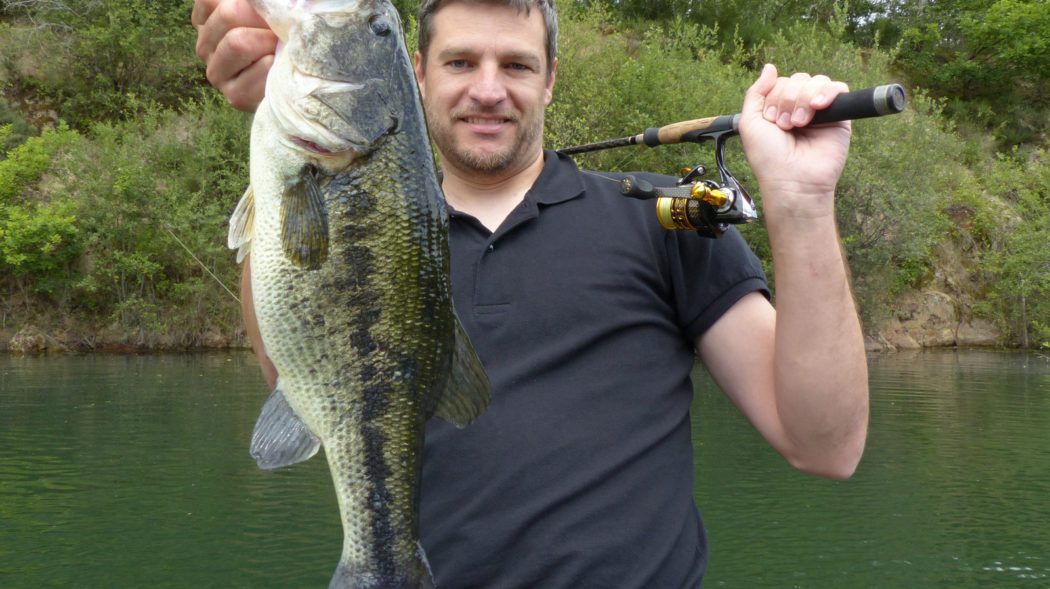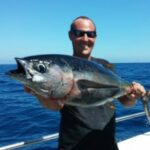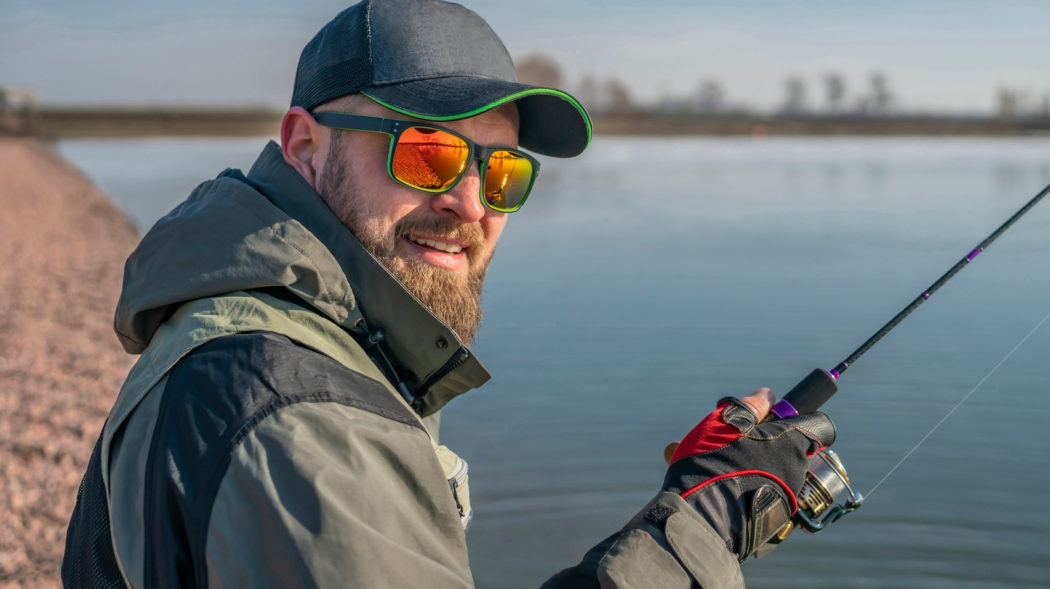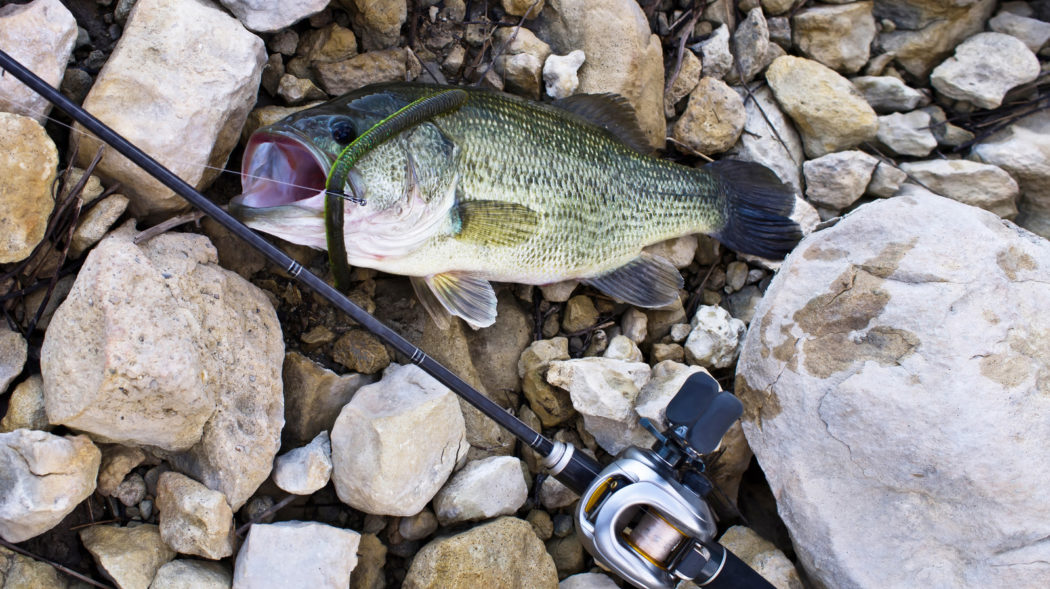Sight Fishing For Spring Bass

The sun is back and the ice is gone. Trees are budding, flowers blooming, and love is in the air. It’s also in the water, as bass build their shallow nests in preparation for the spawn. This is prime sight fishing time, so here are some tips for a successful sight fishing for spring bass.
Setting The Mood: Water Temperature
Both largemouth and smallmouth bass are extra sensitive to water temperature this time of year. As things heat up they’ll move to the shallows. But, of course, those cold-snaps will come to make things harder for fishermen. Bass will run back-and-forth from shallow to deep in the meantime. I wait for at least 3-5 days of constant water temperature to start looking for them on beds.
Largemouth bass
Largemouth bass begin spawning when the water is above 60-degrees. They like a sturdy bottom to “do the deed”. Males will clean off debris and dig a shallow hole near cover. This can be around logs, large rocks, docks, or anything that limits direct sunlight and predators getting in.
Smallmouth bass
Smallies will start moving up into position when the water reaches 50-degrees. They’ll start spawning when it hovers around 55 to 60-degrees. Like their larger cousins, male smallmouth dig out the nest while the female hangs back until ready to join him. The bed will be out of fast current on rocky river bottoms.
Two’s Company, Three’s a Crowd
The mama bass comes late and leaves early. She skips the nest making to feed as much as possible. Carrying thousands of eggs is stressful and the extra eating will help more to survive. Since she also leaves the male alone to guard the fry, my chance at catching both together is limited. This spring-time gorging by the female can make a trophy catch, so I try not to miss many fishing days.
Polarized Sunglasses For Peeping On Bedded Bass
I don’t go fishing anymore without polarized lenses, period. The first time I tried them, that was it. By reducing glare and highlighting certain colors while diminishing others, I see through the water as good as a bass. Better, actually. There are many colored lenses available, and some work better depending on water clarity and sunlight.
Mirrored Coating: Mixing Two Colors
It could be a cloudy day with tannic water, or the sun is blazing and the lake clear as gin. Two colors- one on each side of the lens- can maximize vision anytime. Some polarized shades with mirrored coatings on the front offer effective combinations for sight fishing.
I use a blue mirror on extra bright days to reduce glare off the water. A rose-colored tint behind will brighten the submerged objects. A grey will give a darker tint, which could help depending on the underwater environment.
A green mirror coating is great for bed fishing on cloudy days. It also diminishes browns from muddy and tainted water. Mixing that with a copper-backed lense helps even more to highlight dark spots that indicate beds.
Best All-around Color
I don’t like carrying around more than one pair of sunglasses. I also lose them from time-to-time, and the dual-tinted mirrored ones are costly to replace. A simple amber-colored pair can be bought off the cheap-rack and gives the best all-around versatility. They’re great in those low-viz conditions at dawn, dusk, and on cloudy days. Copper or brown can work almost as well.
Lures And Techniques For Sight Fishing For Spring Bass
Bedded bass aren’t eating. But their parenting instincts make them extra mean, and they’ll still bite. They just have to be riled up, and being able to see them and the lure is necessary to do it.
Be the Predator
The way to get them to bite is by making them think their young are in danger. Other species like crawdads and bluegill (see best bait for bluegill here) eat bass eggs and fry, and will try to invade the nest. Lures that mimic these are usually the most successful.
I’ll work a swimbait or a Texas-rigged crawdad all over a nest. The key is to keep it there with a lot of aggressive movement. A lot of the time, the bass will simply take hold of it by the plastic and remove it from the nest. I just bring it back in and continue dancing. Using bright-colored lures helps me see where it’s at and when the fish has taken the actual hook.
Persistence Over Stealth
Not letting the bass see me helps, but I still catch most that do. It takes longer, but persistent annoyance with a lure hopping around will make it bite, eventually.
Patience Pays
When one lure’s not working I back off for a minute and try another. Changing the cadence can help, too. Making that fish uncomfortable is what gets it to strike.
There’s no more exciting way to fish than being able to see the whole process go down. Sight fishing spring-time bass involves big catches and explosive action, and these basic tips will make it easier. Doing it through the adrenaline rush and a pounding heart is the hard part.
You might also be interested in this article about ice fishing that we have.
As an Amazon Associate, Fishermen's Angle earns from qualifying purchases. We get commissions for purchases made through links in this post.


